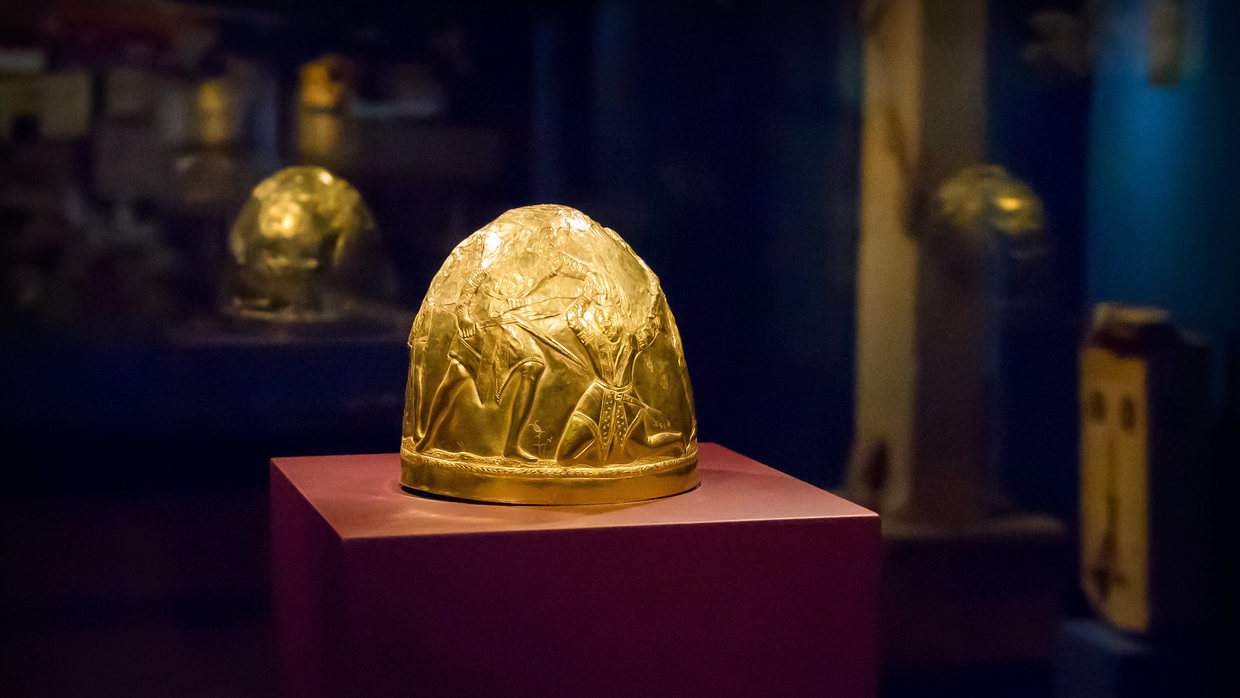Who does the gold of Scythia belong to? A Dutch museum at the center of an international case
By a fortuitous chance that has the unbelievable, a Dutch museum, theAllard Pierson Museum in Amsterdam, the archaeological museum of the university in the Dutch capital, finds itself at the center of an intricate international diplomatic affair. The facts: from February to August 2014, the museum hosted an exhibition, titled The Crimea. Gold and Secrets of the Black Sea (“The Crimea. Gold and Secrets of the Black Sea”), centered on an exhibition of objects that had come on loan from four museums located in Crimea and one in Kiev. As chance would have it, in the very first months of 2014, Crimea was being occupied by Russia and, following a popular referendum in March, the peninsula declared its independence from Ukraine with subsequent annexation to Russia (a status that the European Union and most UN countries did not recognize). Thus, once the exhibition was over, the objects were claimed both by the museums that had loaned them and by Ukraine. This is a precious heritage, known as the “treasure of Scythia”: it includes about three hundred gold objects, including amulets, daggers, and even a helmet from the 4th century B.C., all made of gold (pictured).
The museum has reiterated several times that it is not in a position to decide to whom the objects should be returned, and has made it known that it does not even have a position on the issue, which has since become an international case: the Allard Pierson has limited itself to doing its job, which is to store the objects in its storage facilities with the utmost care pending resolution of the case, and avoiding any further comment.
The case was handled by the Dutch judiciary: in 2016, the Amsterdam District Court had ruled that the Allard Pierson had to return the objects to Ukraine, but the museums where the works were displayed appealed the ruling. This led to the second instance, before the Dutch Court of Appeal, which, again in 2016, ruled that the Allard Pierson’s behavior was fully lawful and that it kept the disputed objects in its storerooms pending the final judgment (the court acknowledged that the museum “could not reasonably judge which of the two litigants was the creditor”). Last October 26 came the ruling: according to the Court of Appeals, the objects must be returned to Ukraine because they belong to state collections, referring to a 1995 Ukrainian law.
Ukraine commented on the Amsterdam court’s ruling through the mouth of President Volodymyr Zelensky, who expressed satisfaction with a “just decision” on Twitter, adding that “Ukraine always takes back what belongs to it: after the gold of Scythia, we will return to Crimea.” However, the last word has not been said, as the four museums that loaned the objects will be able to appeal in the Supreme Court, but they will have to consider as of now the possibility that their objects may take the road to Kiev and therefore their halls will remain empty. On the side of the museums, Andrei Malgin, director of the Museum of the Tauride in Sinferopolis, one of the four institutes involved in the case, has spoken out very harshly: “I consider this decision,” he told the official Russian RIA news agency, “an act of grave contempt for the rights and interests of the Crimean people, it is like spitting on the soul of the Crimean people. A disgusting decision, an example of double standards. We have no guarantees about the safety of the collection, we do not know what will happen, we fear for the future of the objects.”
Photo: the golden helmet belonging to the Scythia treasure. Photo by Monique Kooijmans (Allard Pierson).
 |
| Who does the gold of Scythia belong to? A Dutch museum at the center of an international case |
Warning: the translation into English of the original Italian article was created using automatic tools. We undertake to review all articles, but we do not guarantee the total absence of inaccuracies in the translation due to the program. You can find the original by clicking on the ITA button. If you find any mistake,please contact us.




























